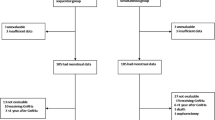Abstract
Goserelin (‘Zoladex’), a luteinizing hormone-releasing hormone (LHRH) agonist induces reversible ovarian ablation in premenopausal women. It is the most extensively studied LHRH agonist for the treatment of breast cancer and data from a large clinical trial program show that, alone or in combination with tamoxifen, goserelin is at least as effective as cyclophosphamide–methotrexate–5-fluorouracil (CMF) chemotherapy in patients with hormone-sensitive, early disease. Furthermore, goserelin has been shown to add benefit when used in addition to standard adjuvant therapy (surgery ± radiotherapy ± chemotherapy ± tamoxifen) and may be beneficial when used after chemotherapy. In patients with hormone-sensitive, early breast cancer, treatment-induced amenorrhea has been associated with an improved prognosis and goserelin provides a highly effective and reliable method of achieving amenorrhea. The reversibility of amenorrhea upon cessation of goserelin treatment may confer long-term advantages compared with permanent methods of ovarian ablation. Ultimately, patients should be provided with sufficient information on the risks and benefits of the treatment options available to them so that they can be involved in treatment decisions.
Similar content being viewed by others
Author information
Authors and Affiliations
Rights and permissions
About this article
Cite this article
Jonat, W. Overview of Luteinizing Hormone-Releasing Hormone Agonists in Early Breast Cancer – Benefits of Reversible Ovarian Ablation. Breast Cancer Res Treat 75 (Suppl 1), 23–26 (2002). https://doi.org/10.1023/A:1020309715942
Issue Date:
DOI: https://doi.org/10.1023/A:1020309715942




